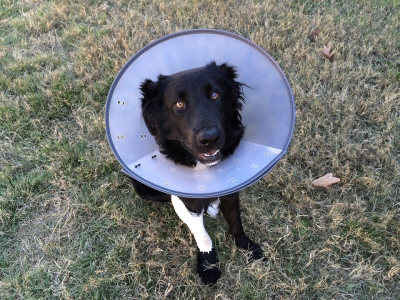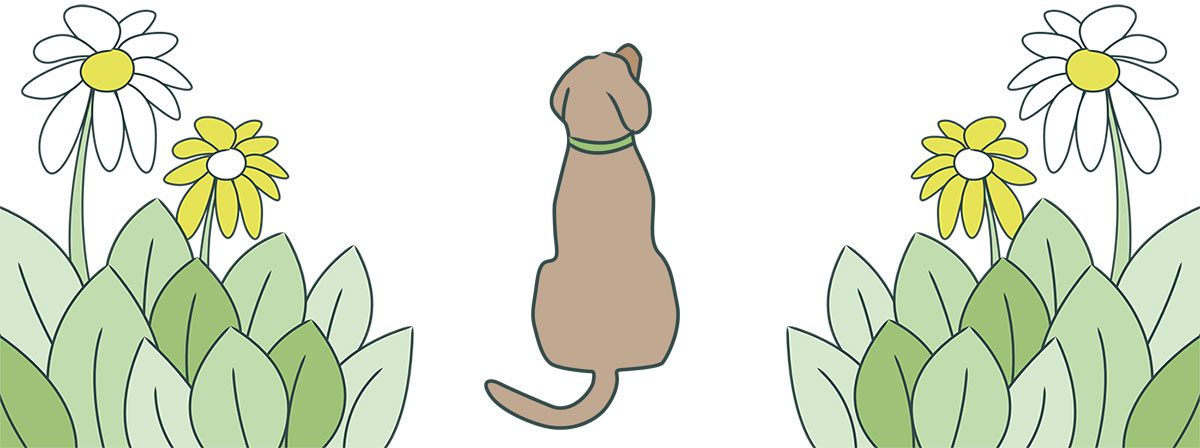
Prevention is always better than cure but our dogs can still get into scrapes. Knowing which hazards to look out for and how to give your dog first aid treatment if something happens can protect your dog’s long-term health.
First aid kit
Carry a first aid kit for your dog. Make one up yourself or buy one. Ready-made kits start at around £8. The first aid kit should contain bandages, non-adhesive absorbent dressings, surgical sticky tape, cotton wool, sterile gauze, scissors, a towel and an Elizabethan collar (“ruff”). You may want to include a muzzle but make sure you know how to put it on your dog! Carrying water with you at all times is also a good move.
Out and About

Dogs love to tumble through thickets and hurtle across heaths, beaches and parkland. Little wonder that their paw pads can get damaged from thorns, glass or other sharp objects. If this happens wash the injured paw.
Then bandage the paw. Keep some pressure on the wound until the bleeding stops.
For sunburned paws apply cold water or an ice pack.
Poisonous substances can lurk outside. Symptoms include difficulty breathing, coordination problems, vomiting/diarrhoea, lethargy or dogs being off their food. Try to identify what your dog has eaten – usually some type of plant – and call a vet. The vet can tell you which first aid you can give and which not while you await his or her arrival.
Choking can be an outcome of dogs chewing on sticks. Offer treats to help your dog cough up the foreign object. Your vet can show you how to dislodge items from your dog’s mouth and even how to perform the Heimlich manoeuvre.
In the Home
You would think that dogs would be safer in the comfort of their own homes but this is not always the case.
Common food dangers are chocolate, alcohol, caffeine, grapes, currants, raisins and sultanas. Members of the onion family can also cause chaos as can peanuts and macadamia nuts. Xylitol, which is also toxic to dogs, is in sugar-free chewing gum, sweets and some medications. Vitamin D supplements can cause symptoms of poisoning. Other dangers at home include salt in dishwasher tablets and other household chemicals such as laundry liquid and bleach. If your pet has ingested any of these things act quickly – call your vet.
CPR for Dogs
Yes, it really is possible to perform Cardiopulmonary Resuscitation (CPR) on dogs. It’s used when you can’t feel or hear a dog’s heartbeat. However, performing CPR itself can be dangerous but it could save your dog’s life.
At Dog Hair Day we urge dog owners to learn CPR in a class well before your dog needs this kind of help. If your dog gets to a point where he needs emergency care you need to move into action quickly. There won’t be time to search for instruction videos on YouTube.
Don’t Fear the Reaper
Whatever you do don’t live in fear. Of course, we want to protect our pets but not to the point is that they become imprisoned by restrictions that we place on them or through anxiety that they may pick up from us. With a little care and some first aid skills on our part our dogs can live the fulfilled happy lives they are meant to.
DISCLAIMER: While every effort has been made to ensure the accuracy of the information contained here it is for educational purposes only. The writer of this article and Dog Hair Day can’t diagnose any physical, mental or behavioural condition in animals nor prescribe treatment. We urge you to consult your vet if you have any concerns about your dog.

